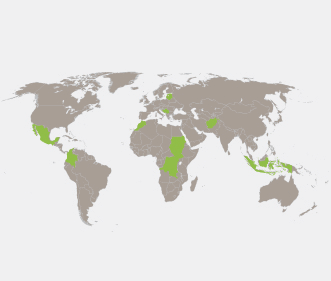As Haiti enters a lengthy and no doubt turbulent period of electoral politics, the country’s long-standing drivers of conflict take on a particular significance. It has been over three years since Haiti last held elections, but by the end of this year more than 6,000 posts will have been contested in presidential, parliamentary and municipal elections. Gangs have figured prominently in Haiti’s recent political transitions, as national-level political actors have deployed urban gangs to generate violence and unrest as a strategic instrument of political influence. In return for their allegiance, politicians have offered gangs funding and impunity from arrest. The nexus of politics and organized crime made waves in Haitian news after a controversial court ruling led to the release of a high profile criminal with close ties to the Presidential family.
—-
 This article is the fifth contribution in our new blog series that features recent research findings on security sector reform and security governance published in international relations academic journals.
This article is the fifth contribution in our new blog series that features recent research findings on security sector reform and security governance published in international relations academic journals.
This contribution summarizes research originally published here:
Timothy Donais & Geoff Burt (2015) ‘Peace-building in Haiti: the case for vertical integration’, Conflict, Security & Development, 15:1, 1-22,
As part of the partnership between the Conflict, Security & Development Journal and the Centre for Security Governance, this journal article will be available for six months free and open access exclusively through this link:
http://www.tandfonline.com/
—-
The article that Timothy Donais and I recently wrote for Conflict, Security & Development, “Peace-building in Haiti: the case for vertical integration,” examines ongoing efforts to address community-level insecurity in Port-au-Prince’s slum neighbourhoods. The paper offers what we hope are useful insights about the nature of gang violence in Haiti, and the host of interventions aimed at controlling it, ranging from enforcement (policing), to inducement (reintegration programming for gang members) and engagement (community-level programs directly involving gang members). Ultimately, we argue that greater coordination and coherence is needed between bottom-up community violence reduction programming and the top-down police reform process, with community policing emerging as a potentially promising avenue for this more vertically integrated approach.
Their potential to re-emerge as political actors underscores the need to understand the structure and motivation of Haiti’s urban gangs. Present dynamics between political power and gang violence can be traced back to the third term of President Jean-Bertrand Aristide, from 2000 to 2004. During this period, elites from both ends of the political spectrum exploited Haiti’s poor and disaffected youth, using them as instruments of intimidation and violence. President Aristide in particular relied on the so-called chimères to bolster his regime. After his ouster, the chimères morphed into urban gangs with criminal, as well as political, aspirations. Since that time, urban gangs’ level of organization, power and connection to the political process have waxed and waned, as has the degree to which their motivations have been primarily criminal (rather than social or political).
In addition to recognizing their genesis as quasi-political actors, any analysis of Haitian gangs must acknowledge their social role as providers of economic opportunity, social inclusion and group solidarity in neighbourhoods profoundly lacking in legitimate economic opportunities for young people. Not only have gangs provided valuable benefits to their members, they have in some cases gained local-level legitimacy by providing goods (such as paying for school fees or providing food) and services (for instance by securing a kind of public order in the absence of state control) to the communities where they operate.
As Haiti enters its first electoral cycle in three years, we can only hope that its political elites don’t reprise their role as manipulators of Haiti’s urban poor, and that gang violence and intimidation don’t play a role in determining who will govern the country. Regardless of the outcome, one of the central challenges facing Haiti’s politicians is how to solve the country’s gang-driven security crisis. We suggest that without a profound socio-economic transformation in Port-au-Prince’s slum neighbourhoods, no sustainable solution can be found. To be effective, this transformation must incorporate both bottom-up community violence reduction programs—for instance Viva Rio’s engagement in Bel Air—with institutional reform being articulated from the top down, such as the ongoing reform of the Haitian National Police (HNP).
As the most visible representative of the government in many of these neighbourhoods, the HNP has a critical role to play in repairing state-society relations, which in Haiti have long been characterized by predation and repression. As our paper suggests, community policing may be one useful avenue through which the community and the police can be brought back into constructive dialogue with each other. If Haiti’s leaders are to bridge the gap between the governing and the governed, its leaders will need to work to bring the local into partnership with the national. We argue that policing and community security may be one of the key areas where this interaction can unfold.
Geoff Burt is the Vice President of the Security Governance Group, a Canadian consulting firm specializing in the security dimensions of statebuilding and peacebuilding. He is also the Deputy Director of the Centre for Security Governance, a non-profit, non-partisan think tank dedicated to the study of security transitions in fragile, failed and conflict-affected states.
Timothy Donais is an associate professor in the Department of Global Studies at Wilfrid Laurier University, where he teaches in the area of peace and conflict studies.
Tags: Academic Spotlight, Community Policing, criminal gangs, Haiti, Police Reform






 Visit the Centre for
Visit the Centre for